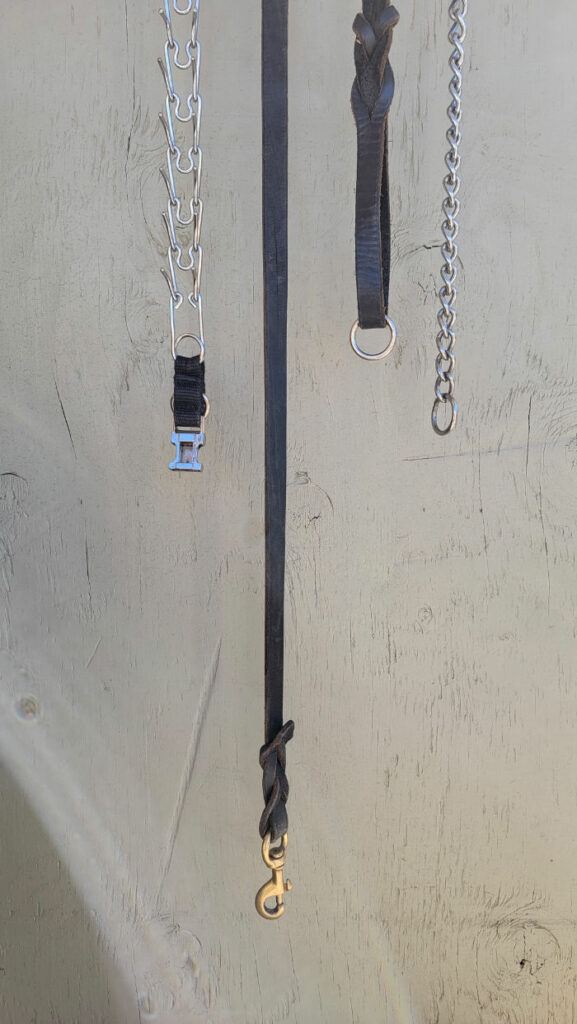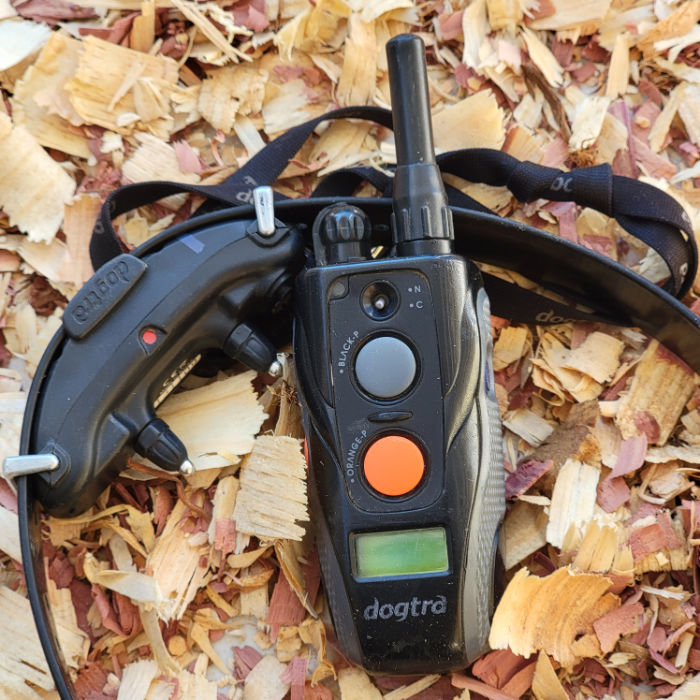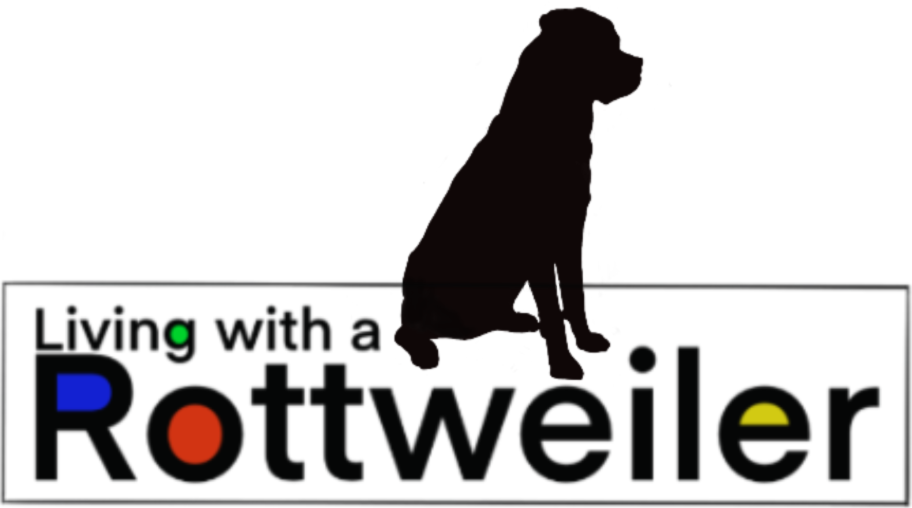Training a Rottweiler Puppy
One of several, very important things you can do for your puppy Rottweiler is to provide the proper training. You are probably wondering when is the best time to begin training a Rottweiler puppy. Well, that is a very good and valid question to ask. I have read several books on dog training for all breeds, and some specifically for training Rottweilers.
Some dog training methods suggest 6 months, and others suggest as soon as possible. I trained my first Rottweiler at about 6 months with pretty good results. My current Rottweiler started training at roughly four months old, as suggested by a professional dog trainer. My wife had concerns with his behavior, and believed it to be puppy aggression. I formed the opinion that his behavior was nothing more than rough play.

As a result, I hired the services of a professional dog trainer to give us an assessment of my new puppies personality traits. The trainer’s assessment was (as I expected all along), a Rottweiler puppy with high energy. I must admit, my puppy had me scratching my head at times, I had never had a puppy with his energy and drive levels. The trainer’s assessment of my puppy Rottweiler was simply, ” A puppy with high prey drive, and not aggression”.
Although my puppy was not showing aggression, the trainer suggested that training begin as soon as possible. A Rottweiler with high prey drive needs training early, and the fact that the breed can become problematic if untrained. Neglecting to properly train your Rottweiler will lead you down a dark dangerous road. All Rottweiler owners should Make training priority number one.
Before, employing any Rottweiler obedience training it is beneficial to have some familiarity with the various training methods used. These methods are classical conditioning, operant conditioning, and dominance training. Classical conditioning, and operant conditioning training methods are used most. Some trainers use modified versions of both methods. A new method fairly new to the above mentioned methods is science based dog training.
In addition to choosing a dog training method, an aptitude test (Volhard’d puppy aptitude test) may give you an indication of the temperament of your puppy. Knowing your puppies temperament will be beneficial in choosing the best training method.
Classical Conditioning
Classical conditioning is a training method perfected by physiologist Ivan Pavlov. Pavlov used experiments to condition his dogs to salivate to the sound of a bell before being fed. Pavlov would ring a bell, and then present the food to his dogs. Eventually the dogs would salivate by the sounding of the bell alone. This is an example of classical conditioning. Our dogs are conditioned on a regular basis unknowns to us. For example; every time I enter my garage and I grab my dogs collar and leash, he knows that we usually go for a walk. This repeated event over time, results in a conditioned response from my dog.
Operant Conditioning
Operant conditioning is a method of learning that is based from the method of rewards and punishments. B.F. Skinner was a proponent of this method, although Ivan Pavlov, and Edward Thorndike had already done experiments on this subject. Skinner’s studies were somewhat differed from his fellow psychologist. Skinner was the first to combine classical conditioning with operant conditioning.
Operant conditioning is a method that is based on rewards and punishments. When your dog executes the command properly, a reward (treat), and praise is given. If your dog executes the command incorrectly a punishment is given, either verbally, or by means of various dog training tools. Some of these tools are the pronged collar, Electric collar, or choke chain.
The operant training method consist of four quadrants:
- Positive punishment-adding something the dog dislikes. A swat on the back, stern verbal correction, “No” etc. This eliminates the chance of this behavior happening in the future.
- Negative punishment-removing something our dog likes to decrease unwanted behaviors. Example: your dog circles you when It’s time to go on a walk. You ignore him until he settles down.
- Positive reinforcement-adding something positive (something your dog loves), to reinforce good behavior. Your dog lies on command, a treat or praise is given.
- Negative reinforcement-Taking away something that is not pleasant when your dog displays the correct behavior, the unpleasant correction is suspendended. Example: your dog pulls on the leash, you snap the leash tightening the collar. When your dog stops pulling, pressure is released.
Science Based Training
Science based training is based from the study of dog behavior by animal behaviorist and Veterinarians in an attempt to fully understand dogs. Science based training is always evolving. New studies are ongoing. New evidence is replaced by old theories on a regular basis.
Science based training is a combination of all the other well-used dog training methods. Currently science based training stresses positive reinforcement training. Positive reinforcement training is one of four quadrants used in operant conditioning.
Clicker Based Training
Clicker training falls within the operant training method. The clicker is used after the completion of a command, and followed with a treat (reward). Once your dog is familiar with the clicker, it is used for positive reinforcement by clicking every time a desired behavior is learned.
The clicker is used as a marker the moment the dog responds to a command. For example, you are training your dog to sit. You command your dog to “sit,” the moment your dogs sits the clicker is engaged sounding a click. The clicker is not exclusive, but only a tool to inform your dog that the command has been successfully executed. I use the word “Good” as a marker when my Rotti properly executes any command. I sometimes follow it by a treat, or pat on my dogs head.
www.clickertraininig.com
Dominance Training
Dominance training has been around since 1940. This training method was based from the confrontational actions displayed by wolfs in the wild. Since some believe the wolf and dog are decendents, they must have similar behaviors as well.
The dominance model is said to be based from a hierarchy system where the most dominant male or female establishes a relationship through aggression towards other wolfs in the pack. This dominance grants the “Alpha” wolfs access to all the resources such as food, resting places, and sex.

This type of behavior is said to be a hierarchy of the relationship building process for wolfs in the wild. When a hierarchy is established by the submission of wolfs in the pack, the alpha wolf asserts dominance over all other wolfs in the pack. Dominance training is a dog training method based from the concept of dominating your dog.
For example; when you enter a door your dog enters after you. When you exit a door, your dog exits after you. Although dominance training is frowned upon by some, I believe this dog training method has some merit, based on the breed of dog being trained. The Rottweiler in my opinion is one of these dogs.
The Dominance training method itself is controversial, due to some of the training tools used; such as the use of the e-collar, choke chain, and pinch collar. I use all three of these tools in my dogs training, and have done so with success. Would I use these tools on all of my Rottweilers, most certainly not. All Rottweilers are not created equally. I would always make my decision based on my dogs personality.
Best Training Method for Rottweilers
The best training method for a Rottweiler, is the method that works! Yes, it’s that simple. However, you must first figure out what personality traits your Rottweiler puppy is displaying. One way of determining your puppies personality is by giving your puppy a puppy aptitude test (PAT). Puppy aptitude test have been used since the 1930s, and they continue to be used presently.
Wendy Volhard, and William Campbell are recognozed for creating dog aptitude test. The Volhard puppy aptitude test is mostly used today by dog training professionals. The Volhard test will help to determine what type of training method will be most beneficial, and effective from puppy to adult. This test will assist you in selecting the right puppy for your lifestyle. Not until you determine what aptitude your puppy has, will you truly know what training method is best.
Final Thoughts
Training any dog requires consistency and discipline. Training a Rottweiler takes a lot of both, and then some more. For a truly confident Rottweiler, training should not end when your dog executes the basic commands such as sit, down, and come. Those commands are just a foundation for additional training.
My Rottweiler is 4 years old, and I train with him for at least 5-6 days for 20-30 minutes a day. On the days that he is officially being trained, he is expected to follow the commands that he is given. Whenever I engage my dog, he is always being trained in some way form, or fashion.
Always give your Rottweiler commands, even when your just hanging out doing things around the house. Some examples are:
- Having your Rotti sit when placing dog bowl on floor/ground
- Having your Rotti wait before eating from bowl
- Have your Rotti heel as he walks with you through a door or gate
- Have your Rotti stay when appropriate
- Have your Rotti come as you move from one area to another while doing outdoor chores
These are only a few of the ways you can keep your Rottweiler in training mode 24/7. Be creative, use your Rottweilers temperament to your advantage. Make every moment count, and every moment an opportunity to train. Rottweilers are very intelligent, trainable dogs. The most gratifying bond with your Rottweiler will come through training. This bond will create a bond that will never be broken.
Bibliography
“labradortraininghq.com.”https://www.labradortraininghq.com
“dogster.com.”https://www.dogster.com
“American Kennel Club.”https://www.akc.org/.
wikipedia. “Classical conditioning.”https://enwikipedia.org/wiki/classical_conditioning
